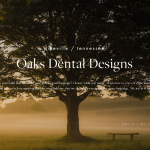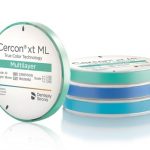INTERVIEW WITH FRANKIE ACOSTA
07 March 2019
“All digital, all of the time”

Frankie Acosta describes his lab as “All digital, all the time”. Technicians need to embrace the technology if they want to stay in the industry, he says.
AA Dental Design is a family owned and run dental laboratory in Murrieta, California. Founded by Francisco T Acosta in the mid 1960s, AA Dental Design as it is today opened its doors in 2010. Its website describes it as a Digital Workflow Laboratory, and it is a true family firm.
Francisco’s son, Frankie Acosta, is Director of Operations, while Francisco is still closely involved as a technician. Frankie’s mother, wife and sister all work for the company, and his nephew and niece have recently joined too. “My father came from Cuba and worked in a factory in California till he was able to open his own dental laboratory,” said Frankie. “He wanted me to study to be a dentist but I could see a profession right here, so I dropped out of school and came to work for him.”
Frankie sees their collaboration as a perfect mix of old and new. “My father will never retire,” he said. “He is still one of my best technicians and we work together on big and complex cases, creating different workflows to move our laboratory to the next generation.”
“His expertise and artistry, together with my knowledge of CAD/CAM, digital processes and new materials, enable us to combine old school and new school techniques and makes us more efficient,” he said. “We produce work to the same high standard as when we did the work by hand, but now we can turn things around in a day.”
“We produce work to the same high standard as when we did the work by hand, but now we can turn things around in a day.”
Frankie started taking an interest in the new digital technology in about 2005, when he saw the first new milling equipment coming out. As time went by he saw the potential of the digital impression machines for dentists, offering the opportunity to scan the patient’s mouth and send the digital impression to the lab. As dentists started to buy CAD/CAM equipment for their office and carry out same day crowns, he was convinced that this was the future, but wanted to wait until more robust equipment was available and able to deal with the workload demanded of it by the dental laboratory.
Once he had decided to take that route, he chose Dentsply Sirona’s inLab system, mainly because of its wide compatibility. “It was really cool because it connected so easily to CEREC,” he said. He had previously discussed the move with a dentist colleague, Dr Daniel Vasquez, who had already invested in CEREC. The system Frankie had initially considered was not compatible so when he returned to Dr Vasquez’ office, having bought the inLab system, they were able to communicate. “He said to me: ‘Now we speak the same language!’”
Looking together at a case, they can discuss what’s needed. “He can say to me: ‘I want the contacts to be green speckled and the occlusion blue,’ and I can design it, mill it and take the crown back to him as he wanted it because we are speaking the same language,” said Frankie.
He’s had good support from Dentsply Sirona while learning to use the equipment, and is now pushing forward the boundaries of what it can do. “Initially they didn’t have the experience to give labs the full backup, but they were willing to listen,” he said. “What’s really needed though is for lab owners to train other lab owners in using the technology.”
“What’s really needed though is for lab owners to train other lab owners in using the technology.”
There’s now a strong inLab community using websites, social media and study groups, and lab owners like Frankie are keen to help colleagues new to digital equipment with their experience and tips. As the West Coast representative, AA Dental has an area within the lab where other technicians can visit and actually get their hands on the equipment to try it out for themselves. “This is the real thing, this is the truth – they can touch it, feel it and work with it,” he said. “We invite other people, dentists and technicians, to come and experience the workflow.”
“Using this digital workflow we can change the way we do business in dentistry as a whole,” he said. “It has changed and improved the relationships we have with dentists and patients.” And distance doesn’t matter any more. Frankie has clients across the United States and beyond. “I can be in California and doctors with this technology can be anywhere around the world,” he said. “I just got a call from a doctor in Chile, for example, and he doesn’t have a lab there that understands the digital workflow. So he sent the information over to me, I designed it for him, I milled it, and then I scanned the model with the milled case, sent it back to him and he biocopied it chairside so that he was able to do a six unit zirconia case in house. It completely changes the experience.”
He sees digital technology as a tool that enables him to carry out his work in the best possible way. “In the past our instruments were our tools,” he said. “Now my software, scanner and mills are the tools I use to enhance what I do.” It in no way deskills the technician, he argued. “I use the CAD/CAM combined with hands-on work, adding the final touches and applying the artistry to our industry. We need to embrace the technology to create things better, faster and to even higher quality standards than by hand.”
“In the future I see digital dentistry getting to a point where the workflow is just going to be so easy. We are just scratching the surface of where all this is going to go,” explained Frankie. “With the Sirona Connect portal now we have the ability to interact directly with our dentist clients, by chatting live with them, by me sending screenshots to them showing them exactly what I’m doing and they can see it at their end as well.”
“We need to create streamlined digital workflows that are better, faster and more efficient for patients. Digital technology allows us to design and create something and send it to a dentist anywhere in the world,” he said. “Dental technicians have to realise that this is that path that dentistry will go down, and they need to embrace it if they want to stay in the industry.”








